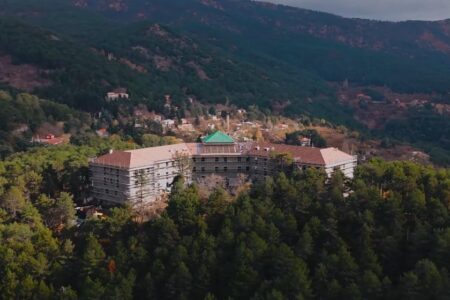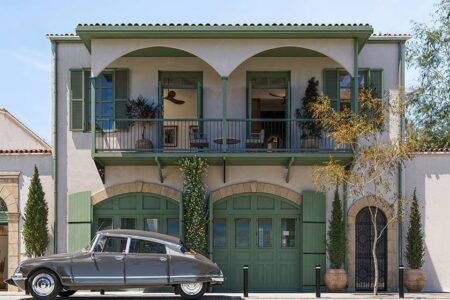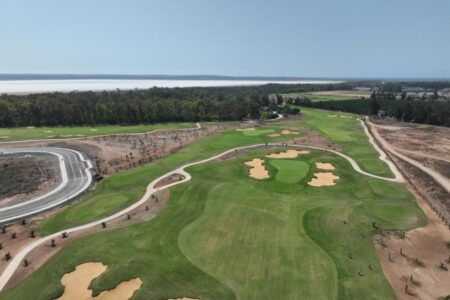18.04.2022
The new holistic environmental risk assessment of the coast of Limassol is the largest environmental research project for the city.
It was presented to the public at the second Blue Limassol Forum last month, jointly organized by the Limassol Municipality and Frederick University.
A timely study, since between 2017 and the first quarter of 2021, 110 pollution incidents were reported in Cyprus, the vast majority of which, 89 percent, were reported in Limassol.
This is critical as coastal and maritime tourism is one of the main pillars of the country’s economy, accounting for almost 12 percent of GDP.
One of the main conclusions of the researchers is that only a small part of the reported incidents are investigated and punished, and the process of regulation and monitoring is highly fragmented between various state and municipal bodies.
To show how difficult the situation is, here is just one example that has been studied in a comprehensive study – high-rise buildings, which over the past decade have become a feature of the coast of Limassol. Leaving them empty is problematic, as is occupying them.
The study indicates that when they are heavily populated, traffic jams occur in the area at certain times of the day.
“The large income gap between high-rise residents and the city’s population as a whole is also creating social and functional impacts noted by local residents,” the report said. “On the other hand, low occupancy leads to the virtual abandonment of buildings, which leads to the degradation of the attractiveness of the city and the erosion of its character. In all cases, the very construction of high-rise buildings exclusively near the coast led to sea water pollution, as runoff from the foundations of construction sites was discharged into the sea.”
What makes this study, coordinated and presented by Angelos Menelau, Chair of the Department of Maritime Transport and Commerce at Frederick University, more feasible than others that have often found themselves on the shelves of government officials?
The researcher firmly believes that this will be implemented – and here’s why.
“The holistic approach is the main advantage of the study and has already attracted the interest of a number of reputable European universities that are focused on studying the interaction of coastal cities and the environment,” he explained.
“The Limassol Bay and its coastline are a single space where the environmental pressures of activity interact and combine,” the document explains. The “flow” of activities from one sector to another suggests that the total impact on the marine and coastal environment of various activities may be greater than the sum of its parts.”
In general, there is a strong need in all sectors of the economy along the Limassol coast to operate and develop in accordance with the guiding strategy of data integration, improved reporting and better use of technology towards a holistic approach to sustainable development and environmental protection. Perhaps most importantly, Menelau is confident that the project will work because it is “a product of the people of Limassol”.
The risk assessment was not only the result of scientists engaging in a research topic, but also a response to Limassol residents’ concerns about threats to the coastal environment, expressed in an extensive public opinion survey that took place during the first Blue Limassol Forum event in May 2020. This project interviewed 90 organizations and 500 people.
“We have recorded the serious concerns of citizens about the coastal and marine environment of Limassol. Their fears were largely related to the intensive development of various business sectors and the obvious corresponding increase in the environmental burden on the coast of Limassol,” said the associate professor.
“We were surprised that everyone we approached was immediately cooperative. Feeling: “We want it.”
Mayor Nikos Nicolaides was the one who introduced the idea of the first holistic environmental risk assessment as a response and is ready to implement the changes as outlined in the document.
“The mayor said he would push and push. His serious and strong commitment to working with all stakeholders and adopting an action plan based on the findings and recommendations of the study means that our work is effective,” Menelau added.
Deputy Minister of Shipping Vassilis Demetriades also expressed his support.
Their support will be needed – soon.
The paper warns that the recent surge in population density is putting dangerous pressure on an already vulnerable environment due to the inadequacy of existing infrastructure.
Menelau’s comment is also indicative: “While all the mayors we spoke with showed an interest in conservation and expressed concern about the rapid construction of high-rise buildings, to this day the construction of such buildings has not stopped. No one but the mayor of Limassol said: “This is my concern as mayor, and I have an important role to play in changing the structure of the city.” The nearly 1,000 page document looked at the six sectors/industries currently active in Limassol Bay and assessed the risks they pose to the environment. two years.
It not only identifies the threats posed by coastal construction, solid and liquid waste management, commercial shipping, oil and gas activities, fishing, marinas and yachting, but also contains many recommendations for each sector and several areas of risk. which are interconnected.
The study was conducted over two years by Frederick University, the main contributor, with the help of the risk management organization DNV-Greece, the Cyprus Maritime and Marine Institute (CMMI), the MER Marine and Environmental Research Laboratory and the Limassol Development Agency.
















